Abstract
Urine samples were collected from 64 men and 88 women in shoe factories and printing plants at the end of a seven hour day shift in the latter half of a week in spring. Urine samples were also taken from 43 men and 88 women in the same factories but who were not exposed to solvents. Exposure to benzene during the shift was monitored by passive dosimeters. Both phenol in urine and benzene in activated carbon were analysed with FID gas chromatographs. The urinary concentrations of phenol were linearly related to the time weighted average concentrations of benzene in the breathzone air; the variation was so small that those exposed to 10 ppm benzene could be separated from the non-exposed at least on a group basis when the phenol concentration was corrected either for creatinine concentration or for specific gravity. The urinary phenol concentrations corresponding to 10 ppm benzene were 47.5 mg/l (as observed), 57.9 mg/g creatinine, or 46.6 mg/l (specific gravity 1.016).
Full text
PDF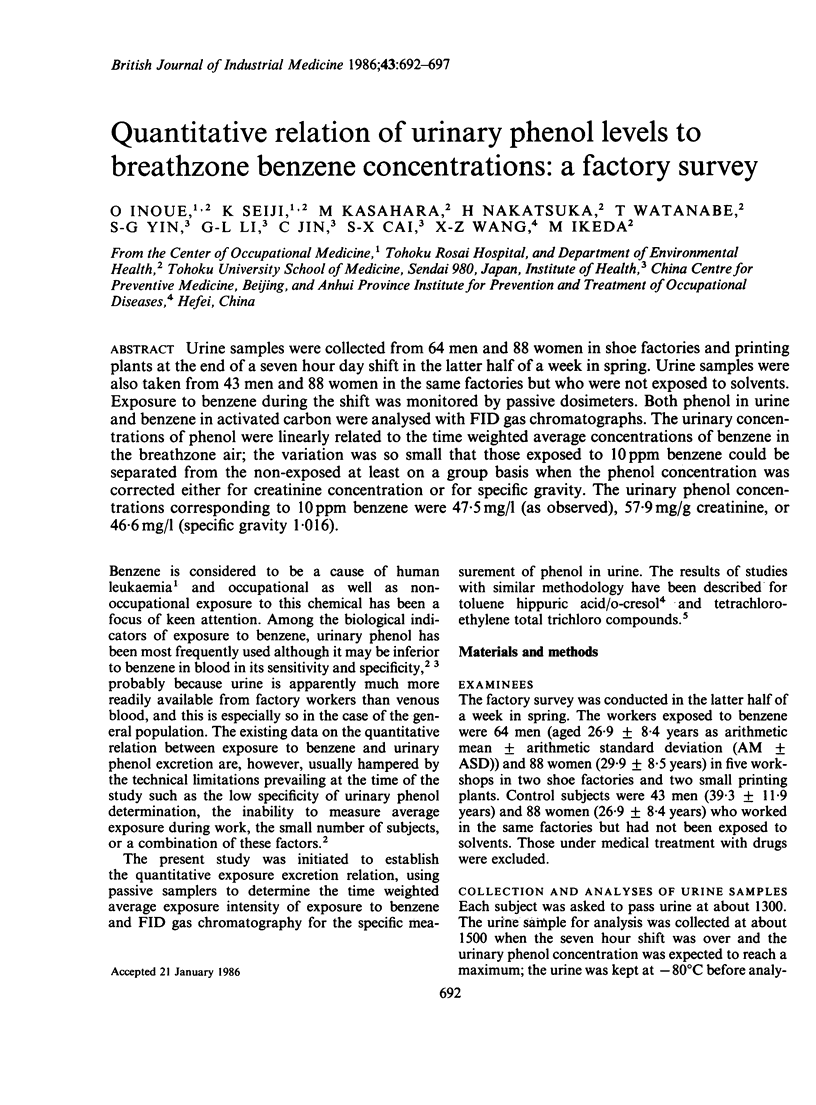
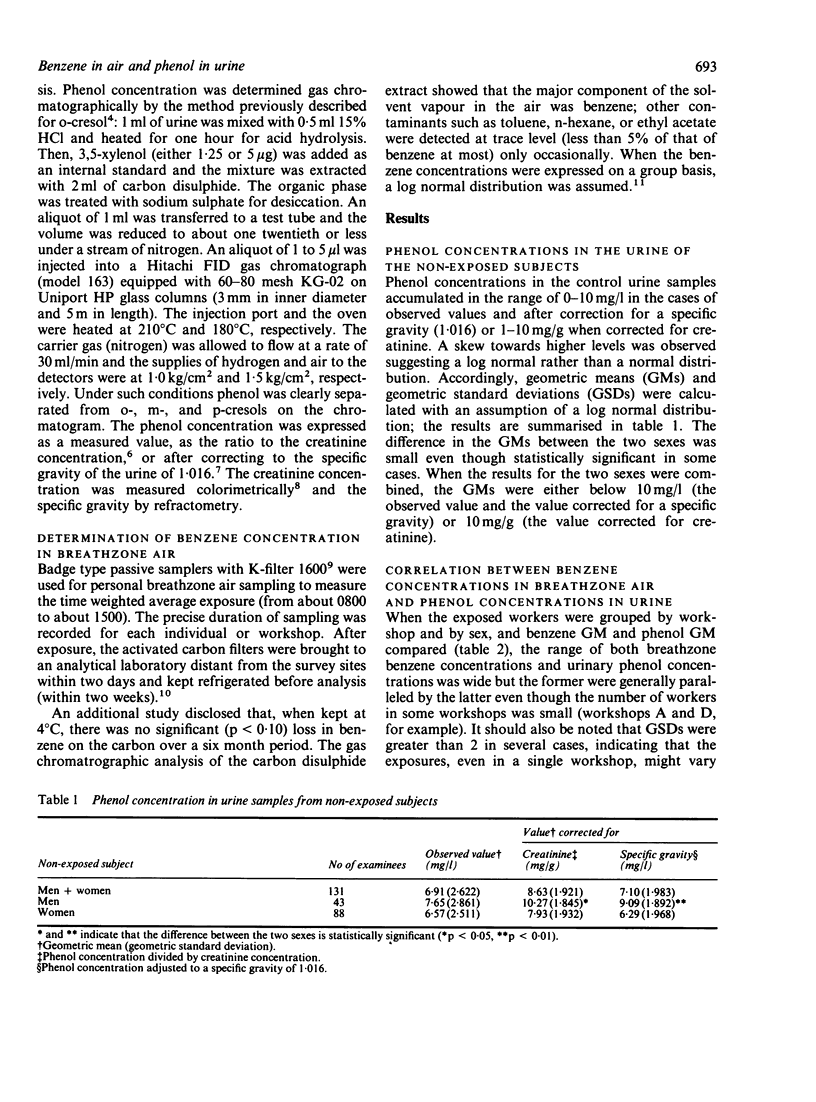
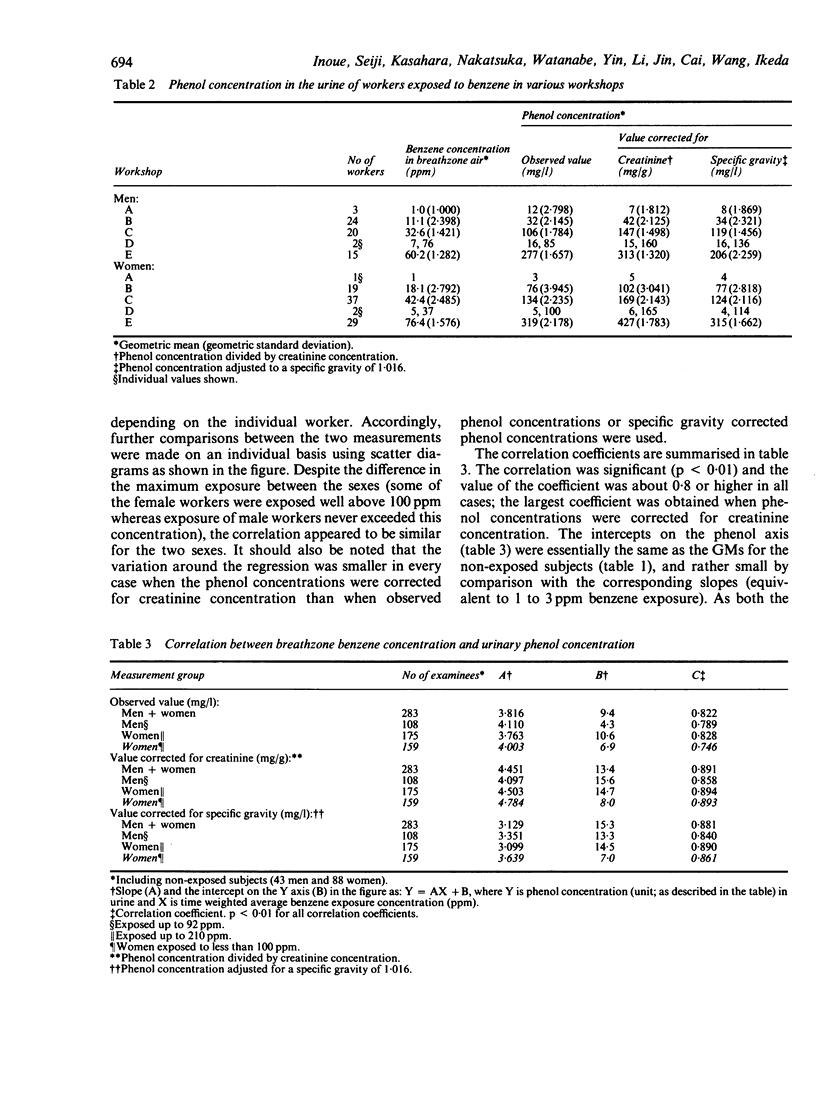
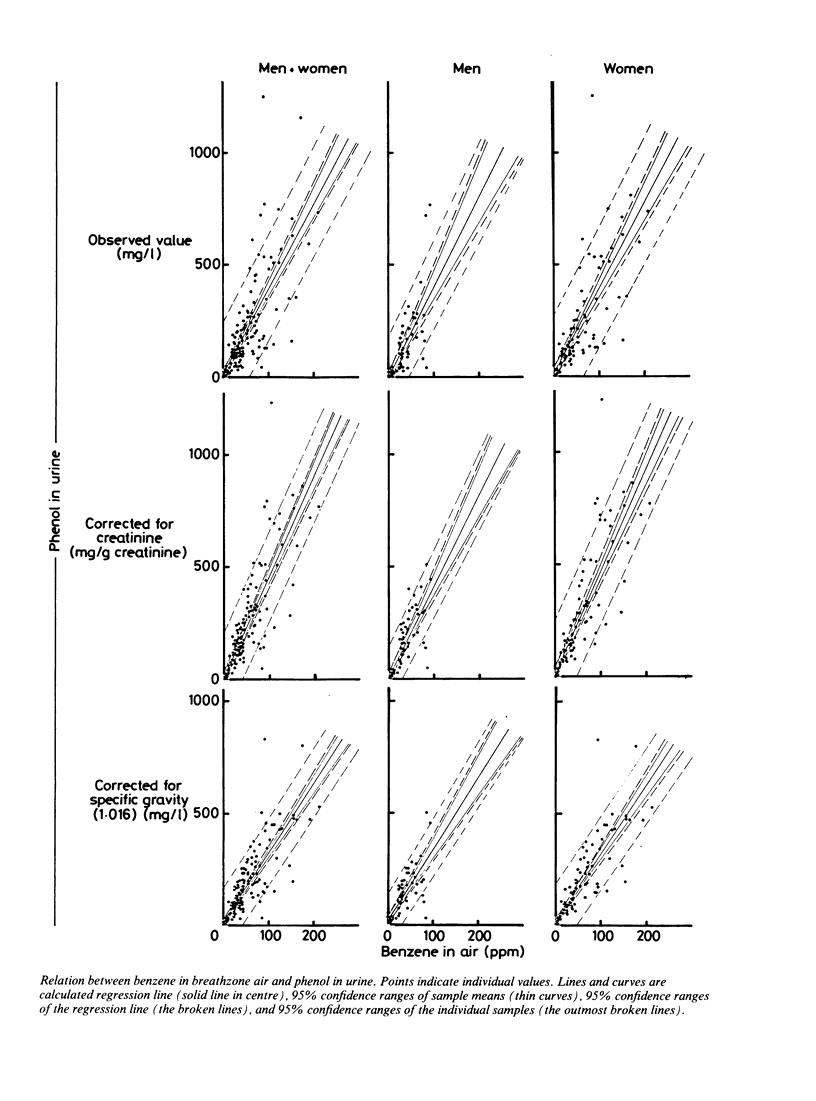
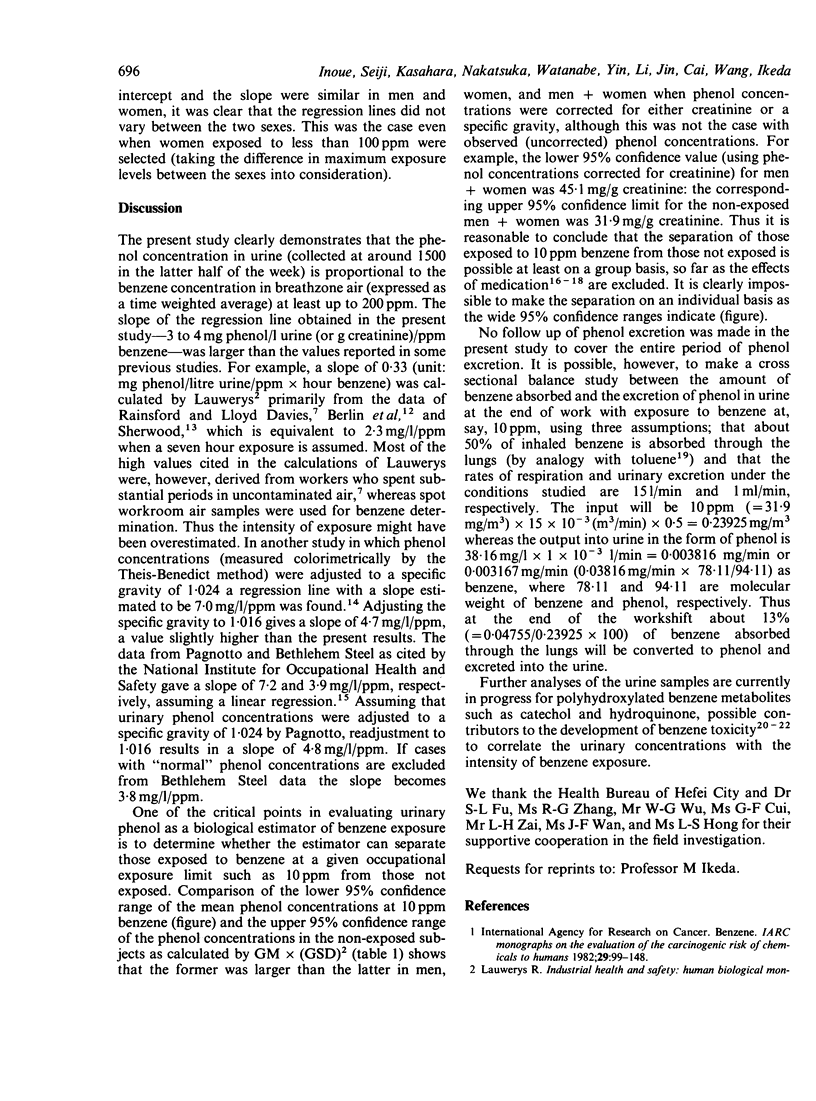
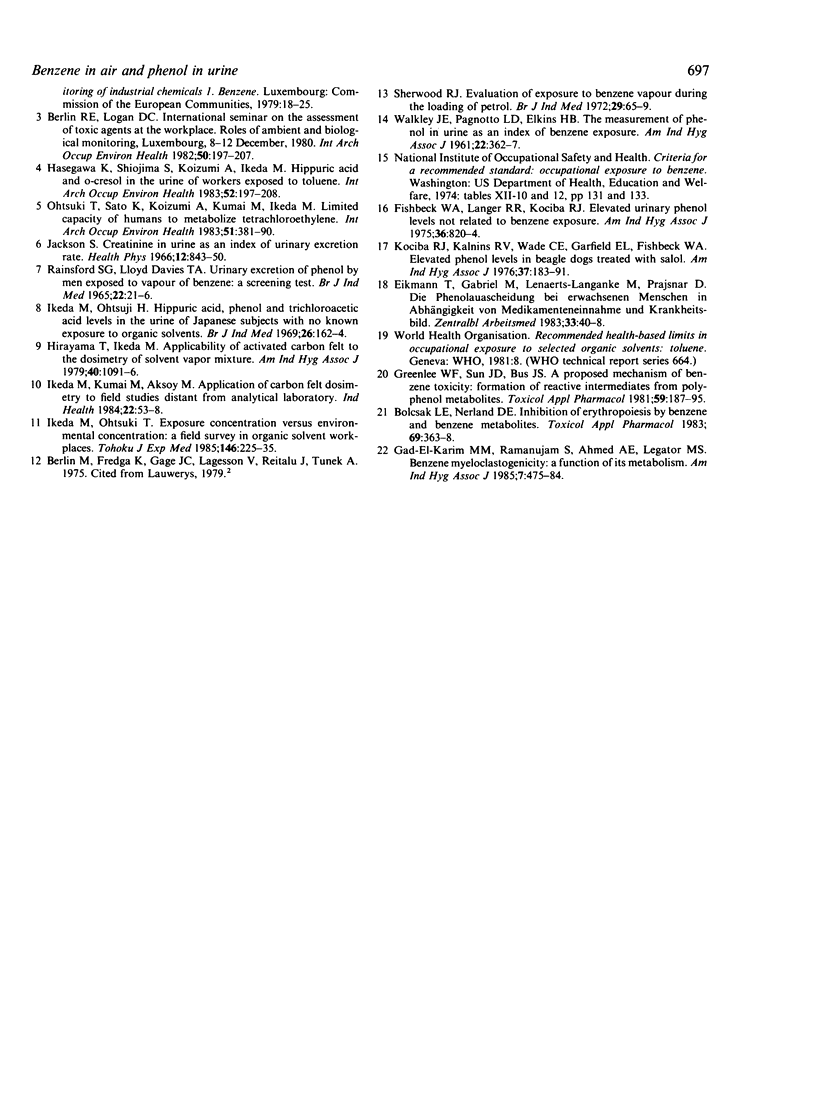
Selected References
These references are in PubMed. This may not be the complete list of references from this article.
- Berlin A., Yodaiken R. E., Logan D. C. International seminar on the assessment of toxic agents at the workplace roles of ambient and biological monitoring, Luxembourg, 8-12 December, 1980. Summary report. Int Arch Occup Environ Health. 1982;50(2):197–207. doi: 10.1007/BF00378081. [DOI] [PubMed] [Google Scholar]
- Bolcsak L. E., Nerland D. E. Inhibition of erythropoiesis by benzene and benzene metabolites. Toxicol Appl Pharmacol. 1983 Jul;69(3):363–368. doi: 10.1016/0041-008x(83)90259-4. [DOI] [PubMed] [Google Scholar]
- Eikmann T., Gabriel M., Lenaerts-Langanke H., Prajsnar D. Die Phenolausscheidung beim erwachsenen Menschen in Abhängigkeit von Medikamenteneinnahme und Krankheitsbild. Zentralbl Arbeitsmed Arbeitsschutz Prophyl Ergonomie. 1983 Feb;33(2):40–48. [PubMed] [Google Scholar]
- Gad-el-Karim M. M., Ramanujam V. M., Ahmed A. E., Legator M. S. Benzene myeloclastogenicity: a function of its metabolism. Am J Ind Med. 1985;7(5-6):475–484. doi: 10.1002/ajim.4700070511. [DOI] [PubMed] [Google Scholar]
- Greenlee W. F., Sun J. D., Bus J. S. A proposed mechanism of benzene toxicity: formation of reactive intermediates from polyphenol metabolites. Toxicol Appl Pharmacol. 1981 Jun 30;59(2):187–195. doi: 10.1016/0041-008x(81)90189-7. [DOI] [PubMed] [Google Scholar]
- Hasegawa K., Shiojima S., Koizumi A., Ikeda M. Hippuric acid and o-cresol in the urine of workers exposed to toluene. Int Arch Occup Environ Health. 1983;52(3):197–208. doi: 10.1007/BF00526518. [DOI] [PubMed] [Google Scholar]
- Hirayama T., Ikeda M. Applicability of activated carbon felt to the dosimetry of solvent vapor mixture. Am Ind Hyg Assoc J. 1979 Dec;40(12):1091–1096. doi: 10.1080/15298667991430749. [DOI] [PubMed] [Google Scholar]
- Ikeda M., Kumai M., Aksoy M. Application of carbon felt dosimetry to field studies distant from analytical laboratory. Ind Health. 1984;22(1):53–57. doi: 10.2486/indhealth.22.53. [DOI] [PubMed] [Google Scholar]
- Ikeda M., Ohtsuji H. Hippuric acid, phenol, and trichloroacetic acid levels in the urine of Japanese subjects with no known exposure to organic solvents. Br J Ind Med. 1969 Apr;26(2):162–164. doi: 10.1136/oem.26.2.162. [DOI] [PMC free article] [PubMed] [Google Scholar]
- Ikeda M., Ohtsuki T. Exposure concentration versus environmental concentration: a field survey in organic solvent workplaces. Tohoku J Exp Med. 1985 Jun;146(2):225–235. doi: 10.1620/tjem.146.225. [DOI] [PubMed] [Google Scholar]
- Jackson S. Creatinine in urine as an index of urinary excretion rate. Health Phys. 1966 Jun;12(6):843–850. doi: 10.1097/00004032-196606000-00014. [DOI] [PubMed] [Google Scholar]
- Kociba R. J., Kalnins R. V., Wade C. E., Garfield E. L., Fishbeck W. A. Elevated urinary phenol levels in beagle dogs treated with salol. Am Ind Hyg Assoc J. 1976 Mar;37(3):183–190. doi: 10.1080/0002889768507441. [DOI] [PubMed] [Google Scholar]
- Ohtsuki T., Sato K., Koizumi A., Kumai M., Ikeda M. Limited capacity of humans to metabolize tetrachloroethylene. Int Arch Occup Environ Health. 1983;51(4):381–390. doi: 10.1007/BF00378352. [DOI] [PubMed] [Google Scholar]
- RAINSFORD S. G., DAVIES T. A. URINARY EXCRETION OF PHENOL BY MEN EXPOSED TO VAPOUR OF BENZENE: A SCREENING TEST. Br J Ind Med. 1965 Jan;22:21–26. doi: 10.1136/oem.22.1.21. [DOI] [PMC free article] [PubMed] [Google Scholar]
- Sherwood R. J. Evaluation of exposure to benzene vapour during the loading of petrol. Br J Ind Med. 1972;29(1):65–69. doi: 10.1136/oem.29.1.65. [DOI] [PMC free article] [PubMed] [Google Scholar]
- WALKLEY J. E., PAGNOTTO L. D., ELKINS H. B. The measurement of phenol in urine as an index of benzene exposure. Am Ind Hyg Assoc J. 1961 Oct;22:362–367. doi: 10.1080/00028896109343422. [DOI] [PubMed] [Google Scholar]


